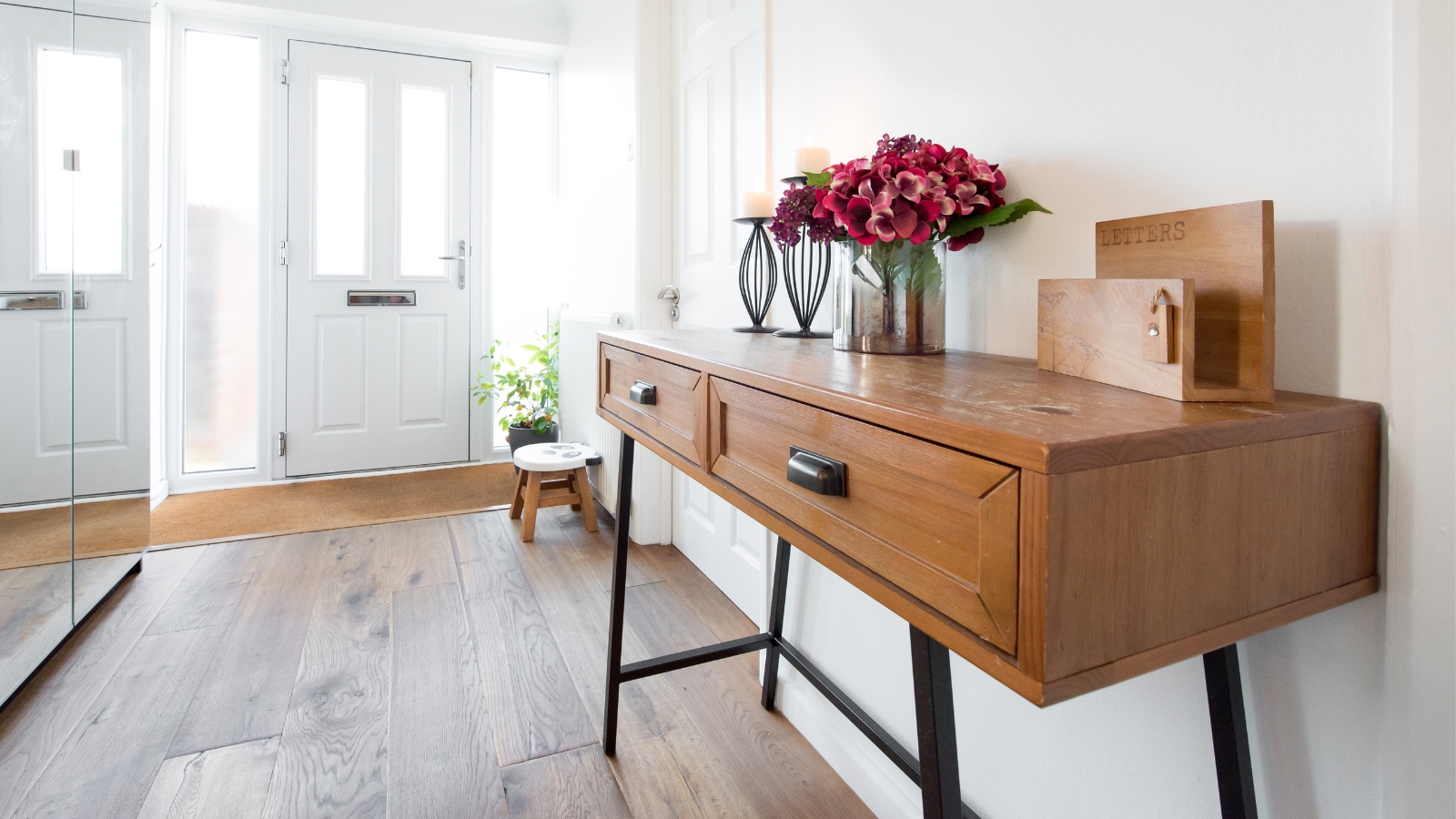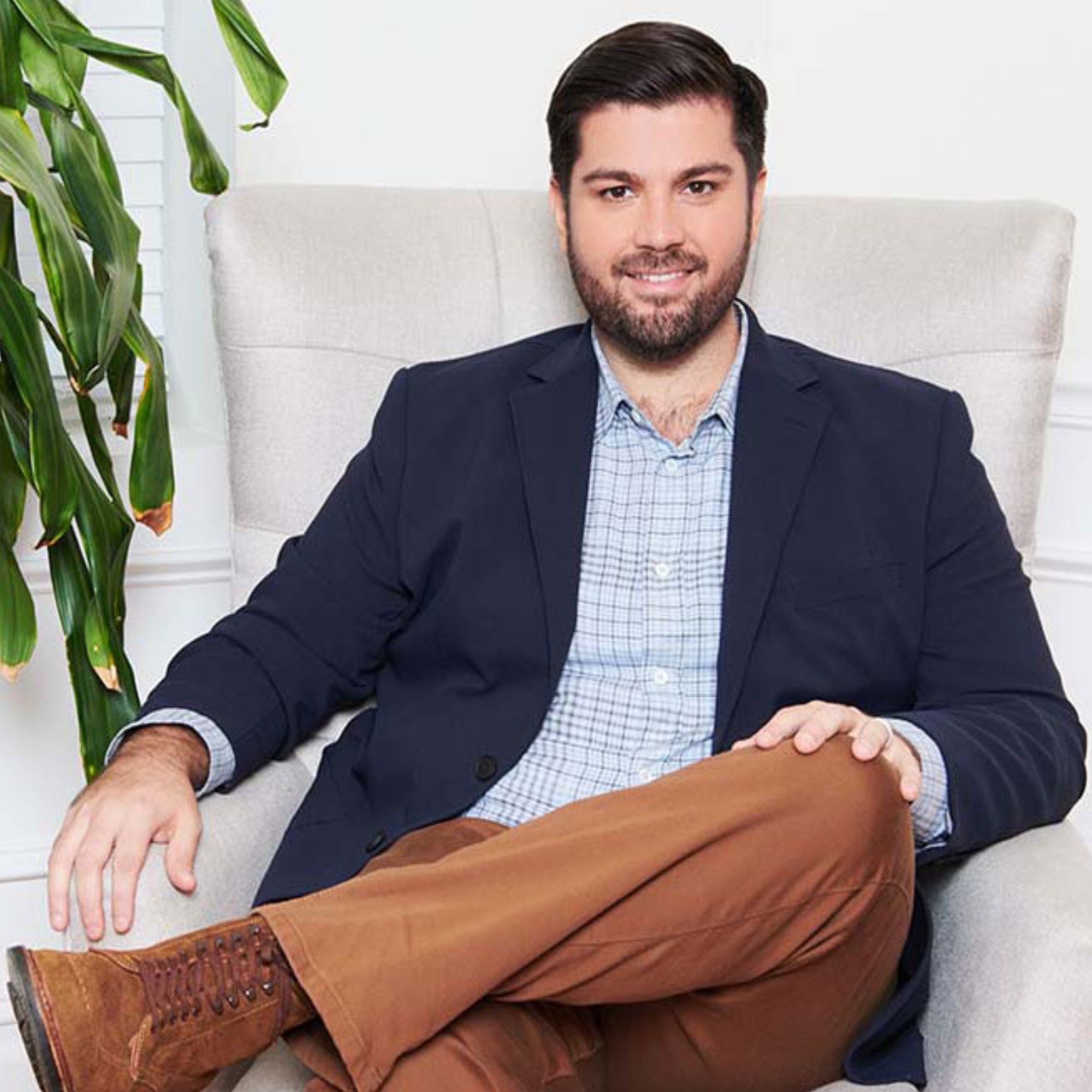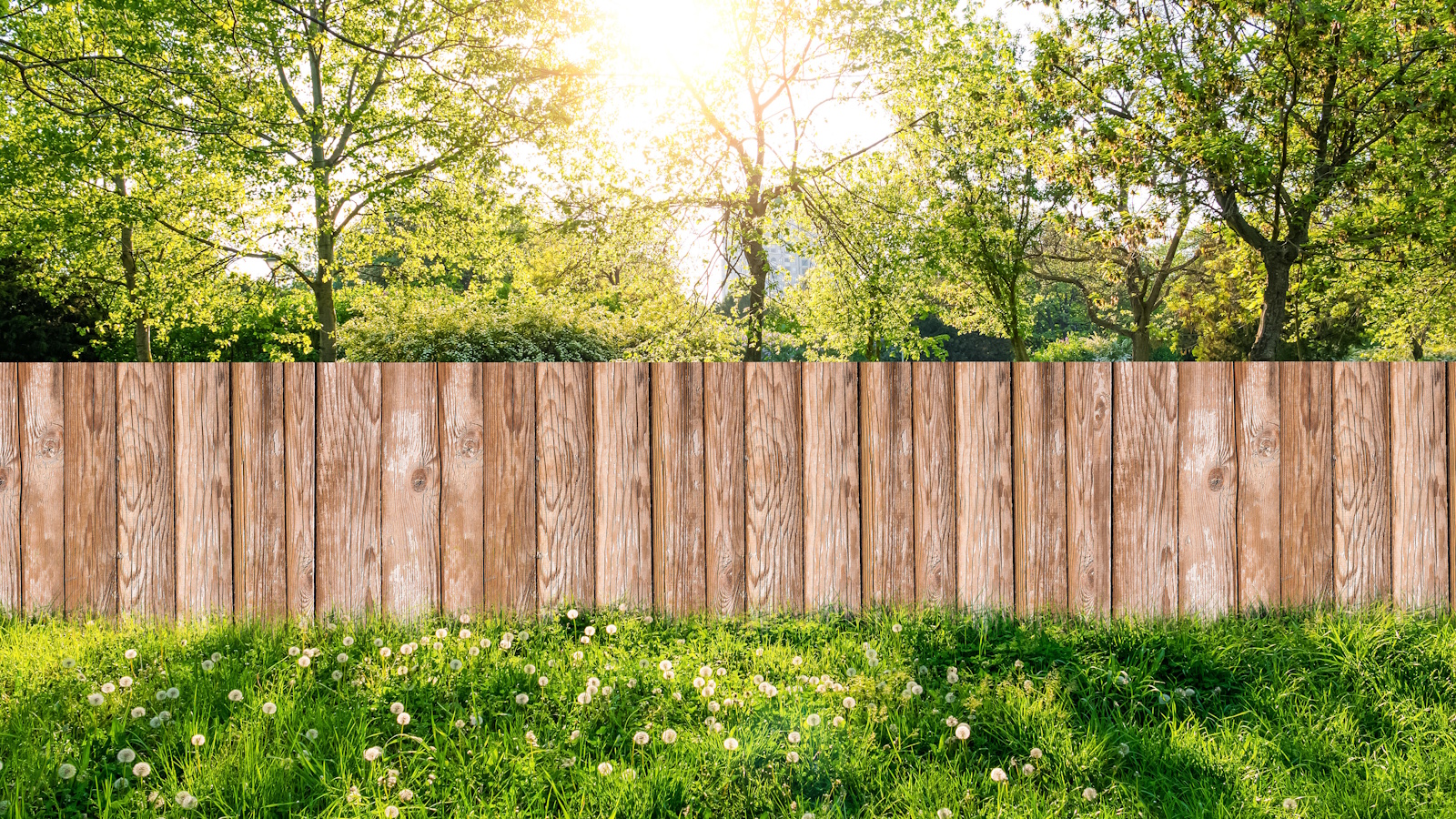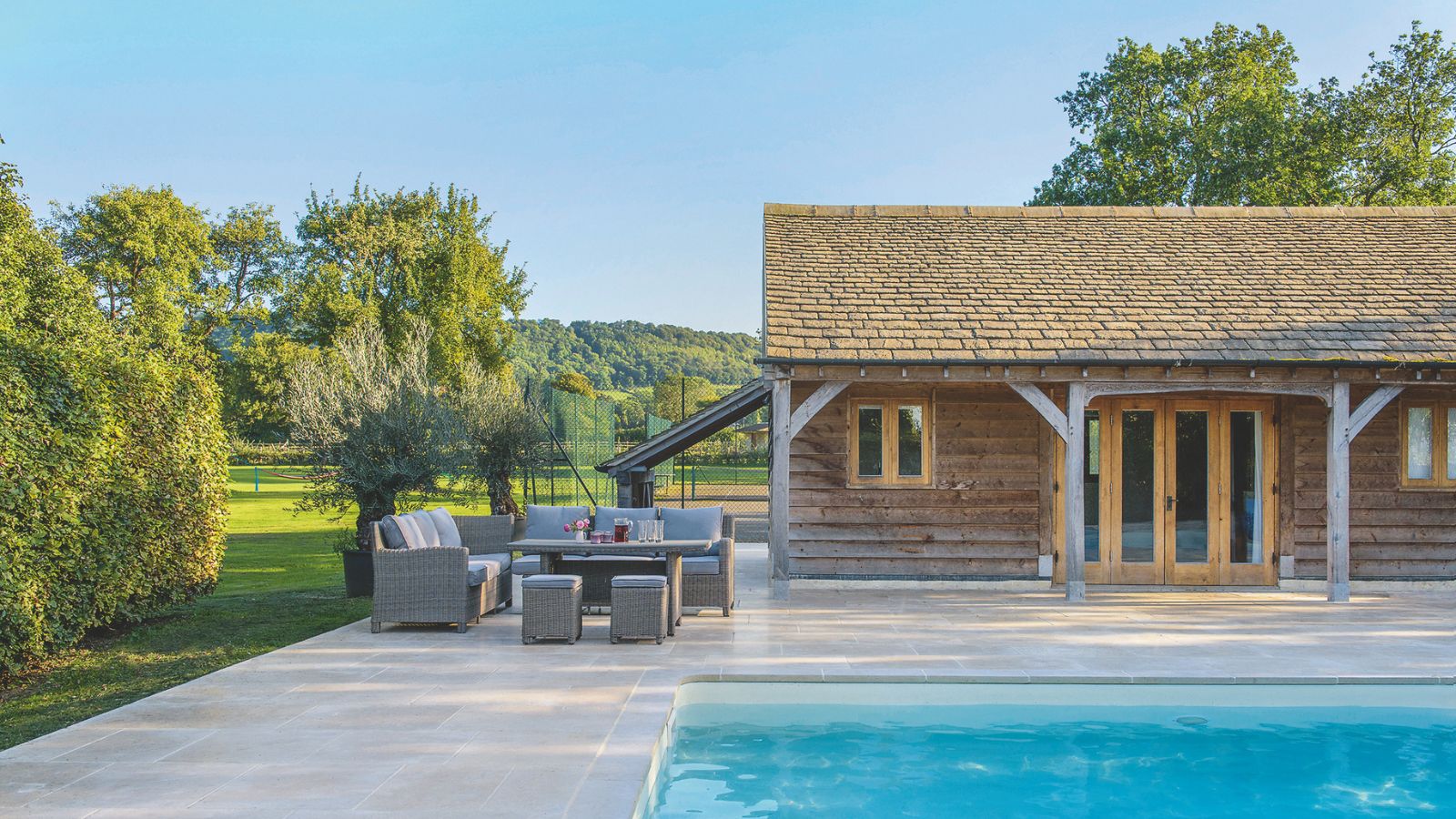Locking up a vacation or second home for winter? 6 ways to prevent mold growth, even when leaving it unheated
Tips from our mold and HVAC pros to protect your unheated property


If you own a vacation or second home, this time of year is often the cut-off point for use and many will be closing these properties down for the winter. However, leaving tours unheated can lead to mold.
A major challenge with leaving a vacation home unattended for many months is the natural fluctuations in temperature and humidity, which can lead to household mold growth. Leaving the heating on to counter this is usually unfeasible for financial and safety reasons, and leaving windows open for air circulation risky.
However, the good news from our mold experts is that its definitely possible to prevent mold growth in an unheated property with these six practical tips and solutions.
The best ways to prevent mold in an unheated property
1. Winterize the plumbing system

This is by far the most important area to pay attention to when locking up. There are several steps to a home's winterization, some of them tedious and physically demanding, but it is very important to do this properly to prevent mold in plumbing.
Michael Rubino, a mold and air quality expert, sets out the following steps for winterizing your plumbing system:
- Insulate pipes: This prevents freezing and potential leaks. Amazon's foam pipe insulation comes in various sizes and is easy to cut.
- Drain water lines: Drain water systems and appliances (toilets, water heaters, washing machines) to prevent leaks.
- Put antifreeze in traps: To prevent water from freezing in traps, add non-toxic antifreeze to sinks, toilets, and floor drains. Elsan water anti-freeze on Amazon is food grade, non-toxic to animals and safe for your drinking water systems.
- Winterize outdoor faucets: Shut off and drain outdoor faucets to prevent freezing and bursting, and place a faucet covering, available on Amazon over them.
Charlie Leduc, mold testing expert and Director of Operations at Axxonlab, adds that insulating copper pipes is especially important. That’s because copper, which is very responses to surrounding temperature fluctuations, tends to ‘sweat’ – that is, it is very condensation prone. Charlie recommends using foam wrappers to mitigate this issue.
Amazon has a range of foam pipe wrapping to suit every size. Look for at least 4.5 stars and a competitive price in the offerings, such as the Tbest Store self-seal foam cover multi pack.
Based on personal experience, I cannot stress enough the importance of draining water systems and shutting off all water supply. The one time I’ve seen this not done at a vacation home, the result was catastrophic. A tiny common household leak from a newly installed bathroom faucet caused massive mold growth in the bathroom and the adjacent bedroom.
This happened within only a few weeks of the property being left unattended. Fortunately, we returned for something left at the property and were able to remove the mold growth. Over a whole winter, however, it would’ve colonized the whole cabin and been a very expensive, difficult and invasive issue to put right.
2. Improve ventilation

Here’s an unpleasant fact for you: mold is present everywhere. Outside, it’s in the air, soil, and vegetation. Mold spores then travel from the outdoors indoors and settle on surfaces inside the home. Charlie Leduc explains, ‘The majority of mold spores we view under our microscopes here at Axxonlab come from the outdoor environment.’
Outdoors, mold spores pose little risk because they are diluted by air that is being constantly replaced. So, if you take steps to dilute the concentration of mold spores inside your property by improving ventilation, there will be less chance that the spores will proliferate in sufficient quantities to start colonizing.
Obviously, leaving windows open in an unsupervised property is an unwise move, prompting invites to pests, and potentially, burglars. Leaving a property unsecure can invalidate your insurance too.
Instead, Leduc recommends installing an air exchanger unit, available on Amazon as these are ‘fantastic for expelling these particulates and introducing fresh air into the mix.’
An air exchanger unit will need electricity to run, however, so may not be an option if you plan to shut off all electricity in the home.
If you are trying to prevent mold in an unheated property you have access too, consider the shock ventilation technique for a free mold-prevention tactic, and create moisture channels to allow for proper ventilation even when you are not there.

DampRid really works, and the more tubs you put around your property the better the effect will be. It's a safe product made from calcium chloride, a mineral salt that absorbs moisture. Unlike an electric dehumidifier, these are safe to leave unattended.

Having tested many mold removal products, I can vouch for this simple and effective mold spray with bleach. When mold is already present, no other ingredients works as well for removing it quickly. Take sensible precautions when using anything containing bleach: wear gloves and goggles and keep the area well ventilated during and after use.

Lysol became extremely popular during the pandemic thanks to its ability to kill viruses, but it deserves a place in every vacation home. A once-over with this spray before you leave for the winter prevents the growth of bacteria on surfaces, which is another important safeguard against mold. We like the lemon-scented version, but you can also get unscented or other fragrances.
3. Insulate doors and windows

Whether or not you’re able to ‘dilute’ the amounts of mold spores coming into the property, even a small amount is enough for mold to thrive if you introduce moisture into the indoor environment. We already talked about how plumbing leaks are often responsible for this. However, condensation inside windows and doors and is another common culprit.
If you have very old window frames, you may need to consider replacing them with more airtight versions. Even newer windows need frequent caulking reapplication, however. Michael Rubino emphasizes the importance of regularly reapplying exterior caulking ‘around windows, doors, and penetrations in walls (if necessary).’
Pro tip: Don’t neglect the crawl space underneath the property! ‘If applicable, use vapor barriers in crawl spaces to reduce moisture from the ground’, advises Rubino. Lowe's Barricade plastic sheeting would work well.
4. Check the drainage system

Clogged drains, or even an incorrectly flowing garden drainage ideas, can create the perfect breeding ground for mold. Charlie Leduc recommends checking that ‘your eaves-troughs and downspouts are fully functional, uncluttered, and diverting at least three-feet away from the foundation wall.’
The winter lock-up is also ‘a good time to check to see if your ground is sloping away from the property. This will help to prevent unwanted moisture intrusions in the basement.’
Learn more in our guides on how to clean gutters from the roof and how to prevent gutters from clogging.
5. Control humidity levels
Granted, this is difficult to achieve without constantly running heating or the best dehumidifiers, but there are things you can do to try and control how humid the home will get. Getting mold absorber tubs works, but you will need to get a generous quantity. Think one tub per room, multiple tubs per larger living areas.
Michael Rubino also recommends paying attention to what you use as storage in your cabin or vacation home. If you’re using cardboard boxes, replace them with airtight plastic containers: cardboard boxes can absorb moisture, and promote the growth of mold spores, as can textiles. All clothing should be stored in plastic bins or vacuum packs.
Beds should be stripped and all linens and towels washed, fully dried, and put away before leaving. Another true story: a single wet towel left hanging in a poorly ventilated bathroom can cause mildew when left unattended over months.

Fragrance free and with a capacity of 500ml each, these are another great tool in your arsenal. Used alongside condensation absorber tubs, hanging these in windows and other areas prone to moisture or drafts will help capture moisture and stop mold growth. Mold needs moisture to grow so limiting it as much as possible in your absence will help protect your unheated property.
6. Clean thoroughly

True story: a banana skin left in a trash can over winter can cause mold growth. It seems like a tiny thing, but, remember: you won’t be there to check on what’s happening for months, so it only seems like one banana skin won’t cause an issue because at home, you’ll deal with it before you’ll see a problem develop.
You don't even need too many items to help you get the job done. Baking soda from Walmart and vinegar, such as orange-scented Harris cleaning vinegar available at Walmart, are both natural cleaning agents that are fantastic at killing mold spores and cleaning your surfaces without harsh chemicals. Learn to clean with vinegar, and all the ways you can use baking soda around the house.
Any organic matter left inside the property, combined with high humidity levels, will be enough to cause mold growth. Obviously, it will also invite pests into the home. So, make sure all trash is removed from the property before locking up, and that all surfaces are thoroughly cleaned of any spills and food stains.
Learn how to clean your kitchen and clean a bathroom, and delve into our winter clean checklist before locking up your unheated property.

Save the planet by ditching paper towels and using microfiber cloths that you can wash and reuse hundreds of times. Avoid adding fabric softener to microfiber loads as it will reduce the material's ability to absorb moisture as well.
Meet our expert

Michael Rubino is a mold and air quality expert, environmental wellness advocate, and founder of HomeCleanse, a revolutionary company with the vision to end the worldwide health epidemic caused by poor air quality and toxic indoor environments. He is also Chair of Change the Air Foundation and Host of Never Been Sicker podcast.
Whilst it is not possible to eliminate every single mold spore that has sneaked into your home over the course of the year, these six steps will help you reduce the abundance and risk of mold developing in your unheated property over winter.
Completing these will reduce the chance of mold spores finding a hospitable environment in which to proliferate. It is extra work before you shut up for the winter, but it’s worth it to come back to a vacation home that isn’t full of mildew and ready to go come spring.
Next, learn the signs you have mold in your plumbing and what to do about it.
Sign up to the Homes & Gardens newsletter
Design expertise in your inbox – from inspiring decorating ideas and beautiful celebrity homes to practical gardening advice and shopping round-ups.

Anna is a professional writer and academic. She taught English Literature for several years before joining Future where she wrote for Real Homes, Homes & Gardens and Livingetc for four years. She is a regular contributor for Parade Home, BiggerPockets, and many other publications. In her spare time, Anna enjoys hiking and gardening.
-
 Reese Witherspoon upgraded a small corner into a cozy reading nook – designers say you can replicate her 'ultimate little escape' (from $18)
Reese Witherspoon upgraded a small corner into a cozy reading nook – designers say you can replicate her 'ultimate little escape' (from $18)'It’s all about comfort, calm, and just the right amount of cozy': You only need three things to follow Reese's example – and it's not only for book lovers
By Megan Slack
-
 Can my neighbor paint their side of my fence? Here's the legal regulations you need to know to avoid disputes, plus when to take action
Can my neighbor paint their side of my fence? Here's the legal regulations you need to know to avoid disputes, plus when to take actionThere's no simple answer to this question, so it's important to do your research before taking action
By Tenielle Jordison
-
 I've spent over 200 hours testing vacuums and swear by my two Dysons – this is how I properly clean a Dyson vacuum filter for longer-lasting appliances
I've spent over 200 hours testing vacuums and swear by my two Dysons – this is how I properly clean a Dyson vacuum filter for longer-lasting appliancesYour Dyson vacuum will last much longer and clean at its best
By Dan Fauzi
-
 Do cleaning products expire? Professional cleaners warn time could make them ‘less effective, and in some cases, irritating to use’
Do cleaning products expire? Professional cleaners warn time could make them ‘less effective, and in some cases, irritating to use’For the best results, it pays to stay on top of the timeline of your cleaning products
By Chiana Dickson
-
 How to clean a patio – 6 different methods, and when you must use a chemical cleaning agent
How to clean a patio – 6 different methods, and when you must use a chemical cleaning agentFrom manual scrubbing, natural solutions or calling in the pros, industry experts reveal the benefits and considerations of each method
By Andy van Terheyden
-
 5 surprising but brilliant ways to clean with old socks – from perfectly buffing stainless steel to deterring pests naturally and more
5 surprising but brilliant ways to clean with old socks – from perfectly buffing stainless steel to deterring pests naturally and moreTackle dust in tricky corners, clean your mirrors and even banish bad odors with those rogue single socks
By Andy van Terheyden
-
 5 things people with clean upholstery always do – they're simple, quick and oh-so-effective
5 things people with clean upholstery always do – they're simple, quick and oh-so-effectiveEnsure your furnishing looks clean year-round with these expert tips
By Seraphina Di Mizzurati
-
 'Wick away the ick' – 6 things people with clean laundry rooms always do to make this hardworking space shine
'Wick away the ick' – 6 things people with clean laundry rooms always do to make this hardworking space shineThese tips on how to clean your laundry room will banish grime
By Seraphina Di Mizzurati
-
 How safe are carpet deodorizers? As a seasoned vacuum tester, I urge you to try alternative methods
How safe are carpet deodorizers? As a seasoned vacuum tester, I urge you to try alternative methodsNatural cleaning is always the answer
By Dan Fauzi
-
 'The world will not end' – 5 cleaning habits to quit for a happier, easier life, and what to do instead
'The world will not end' – 5 cleaning habits to quit for a happier, easier life, and what to do insteadGet your home sparkling, minus the stress
By Ciéra Cree